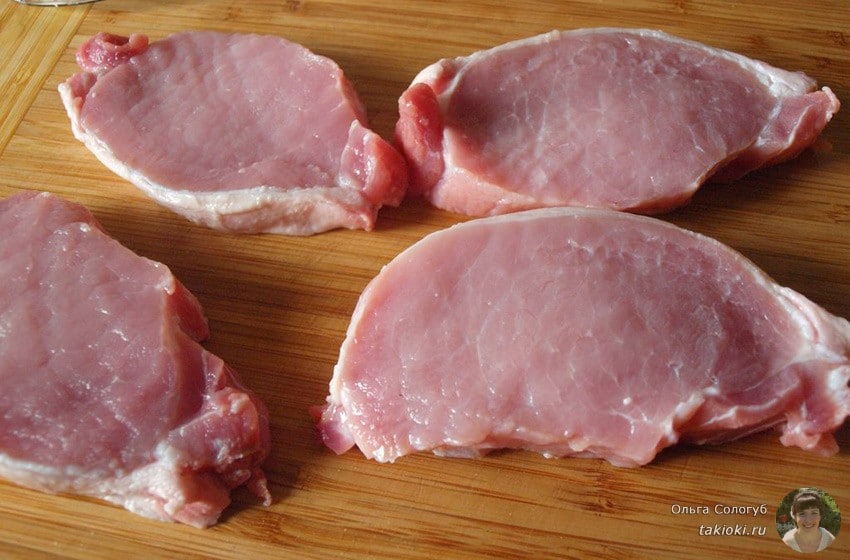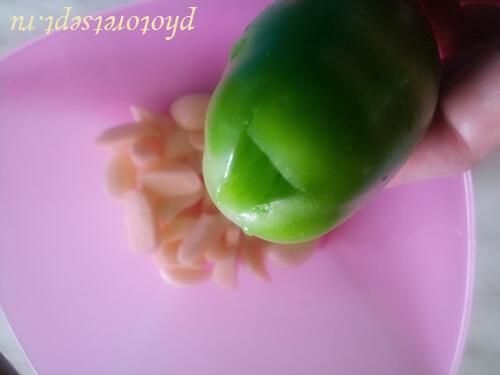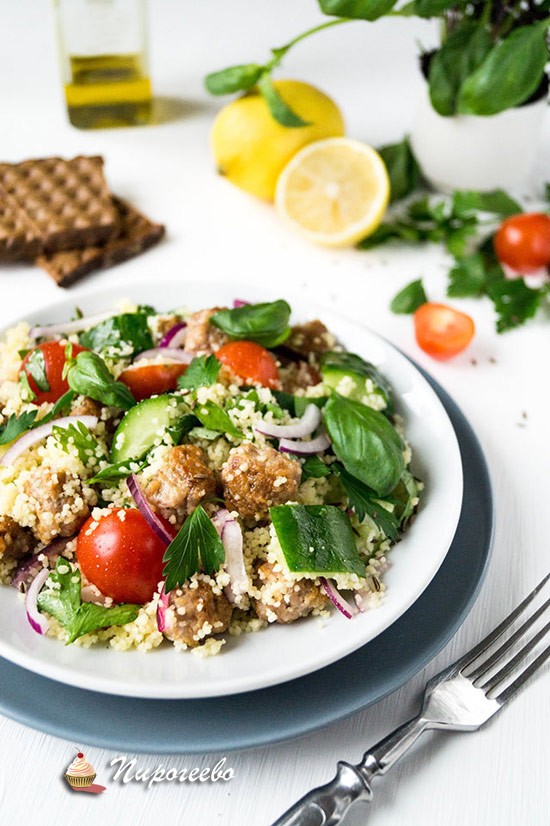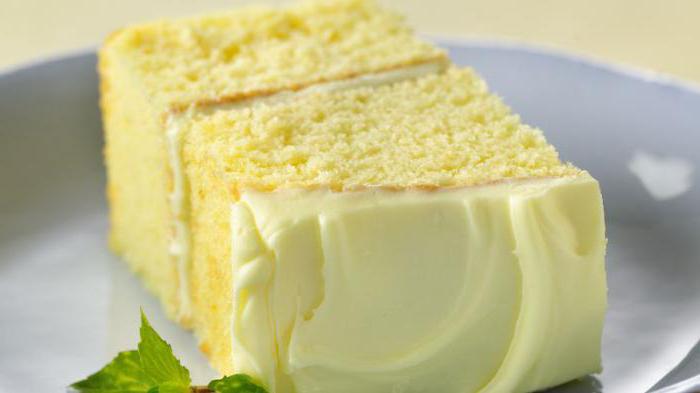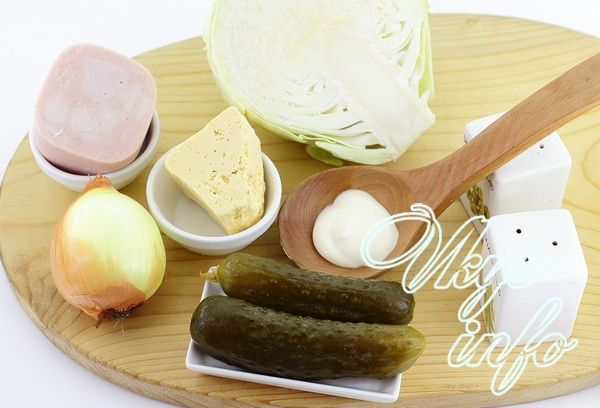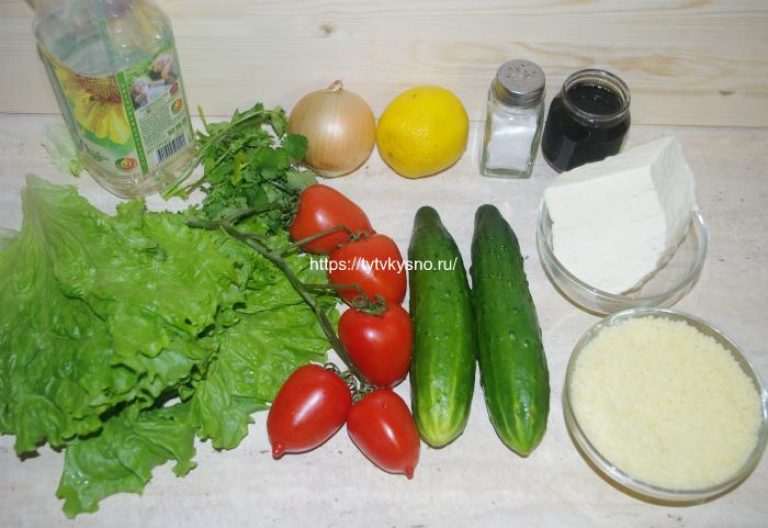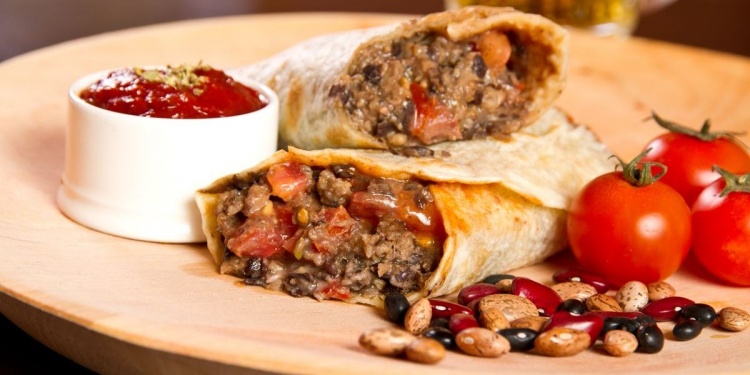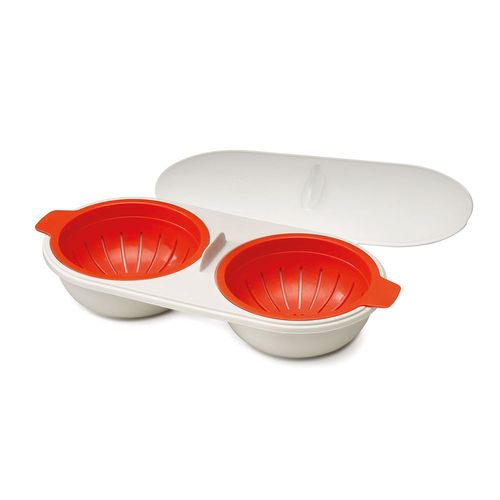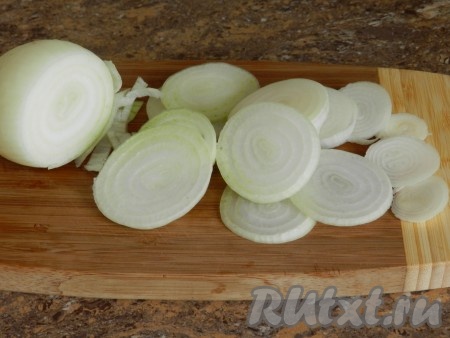Dish boiled dough with Uzbek egg filling. Dumplings with egg tukhum barak
Tukhum barak - eggs in the dough, in the form of rectangular envelopes, boiled in salted water. Otherwise, these are dumplings stuffed with eggs. Despite the complexity of cooking, this dish is one of the important and traditional dishes in Uzbek cuisine ...
- Ingredients for the dough:
- Flour - 2.5 cups
- Water - 1 cup
- Salt - a pinch
- Ingredients for the filling:
- Eggs - 5 pcs.
- Linseed or cottonseed oil - 5 tbsp. spoons
- Milk - 5 tbsp. spoons
- Salt - 1/3 teaspoon
Dumplings with eggs recipe with photo
The dough is kneaded in warm water with the addition of a pinch of salt and infused in a warm place - 10-15 minutes. (Like dumplings)
Pour water into the pan to boil the envelopes and set to simmer on fire.
For the filling, we drive the eggs into a deep cup, pour cold milk and butter, put the salt and beat thoroughly.


Next, roll out the dough into a thin layer. We cut the ribbons into about 6 cm. In the length of 20 cm., Form envelopes, leaving one part open, as shown in the photographs.
Please note, when forming envelopes for dumplings, sprinkle the dough or add a little flour with your fingertip, so that the inside of the dough does not stick together.

On each envelope, pour the prepared egg mixture, about 0.5 cookers or 4-6 tablespoons, then we pinch the edges so that the liquid does not leak out during cooking.

Blind envelopes are released one at a time into boiling and slightly salted water, 5-6 pieces at a time and boiled until the envelopes float to the surface, and then transfer to a cup with cold water and cool for 2-3 minutes.

The envelopes slightly cooled down in cold water are shifted with a layer into a flat cup, greased with oil and served to the table.

Dumplings stuffed with eggs it is better and tastier to eat chilled and freshly prepared, preferably on the same day.
The analogue of Tukhumbarak is Russian dumplings, Ukrainian dumplings or Italian Ravioli (pasta from dough with various fillings). Unlike those listed, Tukhumbarak is prepared exclusively with egg filling.
A bit about the deck and poker
I often recall my grandmother, with her thin, strained hands, a network of mottled c vein veins. Now that she is gone, I am more and more aware of and reevaluating this meek and impossibly modest person. After her, I no longer had to meet people of this type in my life. Yes, they do not fit into our current reality with its cold prudence and consumerism. Even visiting her daughter (my mother), she managed to bring a little meat with herself in a rag, so as not to burden our family budget with her presence. As far as I can remember, almost always (as soon as I appeared to visit my uncle, where my grandmother lived), he made her in Osh-Khon (in the kitchen), where she constantly cooked something.
I remember how I laughed and sincerely wondered why she, squatting and putting in front of herself a wooden deck (“kunda”), chopped and chopped meat on it with an ancient antediluvian knife with a wide blade (“cordy osh”). Indeed, for these purposes, people have long come up with a meat grinder that will grind any meat in a matter of minutes? But grandmother never argued. And she continued methodically and monotonously tapping, making habitual movements.
And even then, already sitting at dinner and praising amazingly delicious dishes prepared by her wonderful hands, I continued to wonder at her patience and perseverance, not understanding the most important thing - all the most delicious is prepared exclusively by hand, and no meat grinder, no the most perfect unit able to replace ordinary human hands. This came to me much later, when I was over forty.
And in general, I noticed that almost all dishes of oriental cuisine are held exclusively "on hand" and this, of course, is not surprising. Traditions, a special centuries-old way and continuity in transferring experience to subsequent generations could not but leave a special imprint on the Bukhara people in everything, not excluding, at the same time, such an area as culinary. Here, perhaps, as nowhere else, this connection with previous generations is most clearly and visibly felt and viewed. For this, it is enough to enter almost any house in the Old Town, where you can still see in the kitchen numerous utensils and objects made by handicraft. And they all find their application in business, and do not lie on shelves like antiques.
I am very sorry that I began to show interest in such things late. Because now in young families a lot of what was left to us from our grandparents was gradually replaced by objects and aggregates of modern industry. No, I am not for a return to the past and the technical revolution will not stand still. It's clear. It is also understandable that with the disappearance of ancient utensils, which involve personal participation on the part of man and replacing it with the latest technologies, for the sake of saving time and cheap labor, we no doubt lose something more valuable than just a “grandma’s deck” or “grandfather poker”.
That is why I rejoice in those small "islands" that have still not been conquered by scientific and technological progress. And among them, such dishes as lagman, manti, tukhum-barak.
Literal and direct translation of it sounds like this: "tukhum" - "egg", and "barrack" - "boiled". “Think a boiled egg,” you say, and you will be wrong.
Actually, the whole difficulty lies only in the fact that the "envelopes" of the dough, in which it will be necessary to pour a mixture of milk, butter and eggs, are tightly "sealed" and not torn during cooking. That is, so that the contents do not leak out. There are a number of subtleties, but this is only later, during the cooking process. In the meantime, back to our "huts." This word implies a cooking method and means - "cook". In Bukhara, Karshi and Samarkand cuisine, it is found quite often, as applied to other dishes. For example, there is such a dish as cadu-barrack ("cadu" - "pumpkin"). Pumpkin cooked in the dough. Something like dumplings. However, if you come across the phrase “cadu-bichak”, then this is not the same thing. The word bichak means fry. But it is, for general development. In conclusion, before we proceed with the direct preparation of this dish, I should only note that the tukhum-barrack is good both in hot form and in cold.
Personally, for myself, I have not decided finally - in what form it is better to eat it.

In principle, “the devil is not so terrible as his ...“ baby. ”And therefore - let's take a chance and maybe something will work out. But for a start, we, how to determine the products
Tukhum Barak
For the dough:
Premium flour - 500 ml;
Egg - 1 pc;
Water - 250 ml;
To the filling:
Eggs - 8 pcs;
Sesame oil - 15 tablespoons;
Milk - 15 tablespoons;
Salt to taste;
Separately:
Water (salted) - 200 ml;

As always, you should first knead the steep dough. For these purposes, we take a deep bowl, pour a full glass of ordinary (but better cooled boiled) water there, pour half a teaspoon of salt, drive one egg in, mix thoroughly until a homogeneous mixture and then carefully pour the flour, while kneading the dough in a circular motion. Do not try to pour all the flour at once. Leave a little on the blaze.
Having thoroughly washed the dough and rolled it into a ball, leave it for 10 -15 minutes in a bowl, covering it tightly on top with a plate so that it does not wind off. After the indicated time, it will be necessary to knead it again and, after adding a little flour to the bottom of the bowl, let it rest for 10-15 minutes. And finally, for the third time, process it again and leave it in order to start rolling the dough into a regular pancake, like manti, in 5-6 minutes.
In the meantime, we take out another deep bowl and carefully drive all 8 eggs into it, carefully making sure that no spoiled eggs are caught among them. Now we take an ordinary kitchen knife in our hands and begin to "chop" the egg mixture with it. It is to chop (to perform methodical translational movements from top to bottom) by tilting a bowl slightly on its side for convenience and gradually rotating it around its axis. Two or three minutes, no more. In no case do not try to "ease" your task by adopting a mixer or an electric whisk! In this case, you can safely pour the mixture into the sink and start all over again.
If you try to ask me: “why, in fact, chop, and it is with a knife?”, Then I will simply and frankly have to admit to you: I don’t know. I really don’t know - based on what laws you should do just that, however, I firmly believe that our ancestors simply didn’t invent anything and that everything has a reasonable basis. In a separate small bowl, mix ordinary store milk with sesame oil. Attention! Sesame oil should be refined and diluted with any vegetable, in a ratio of 1 to 10, respectively. If you can’t get sesame oil in any way, then you will have to replace it with vegetable oil. The result, respectively, should be expected a little worse. Do not forget, at the same time, to salt a little mixture.
Finally, continuing to “chop” the eggs, slowly pour them a mixture of milk, butter and salt. Continue to stir for a while (1 - 2 minutes), after which you can put the bowl with the mixture aside and take a little rest.
We put a cauldron or an aluminum pan on the stove, fill it three quarters with water and, while the water begins to boil, we proceed to roll out the dough. In order not to repeat myself, I suggest that you look in the recipe for "manty". The whole procedure proceeds "one to one", except for the last moment: there we cut into "squares", and here we should cut into "rectangles", the length of which is twice the width. Now we are preparing a small tray, which we cover with a clean linen or waffle napkin, put our "rectangles" on it in small stacks (so as not to stick together) and cover with another napkin on top so that the workpieces do not become airy.

Pour water into a small cup, a little salt and mix the contents well. We take the first “rectangle” of the dough, lay it out in front of us (on a cutting board), dip our finger in salt water and moisten the long edges of the “rectangle” with it. Then we fold almost (!) In half (not flush, but a little bit, 2 mm lower) and firmly press the edges of the formed "envelope". The appearance resembles an unsealed mail envelope, with the only difference being that it turned out to be square, not rectangular.
And now it remains for us to carefully pour the prepared mixture a little tablespoon inside the envelope, cover the top edge of the dough, press firmly (as if to glue it) and ... lower the “sealed envelope” with the mixture into boiling water. And urgently proceed to the next.
In general, as you probably already guessed, this dish is also family-friendly. That is, it is very difficult for one to cope here. Therefore, it is necessary to divide into two (or even better - into three) groups: one quickly sculpts the empty envelopes, the other pours the mixture into them, tightly seals and transfers to the third, whose task is to lower these envelopes into boiling water and monitor those - which of the previous ones (“huts” surfaced to the surface) are ready to be removed and put on a wide flat dish in time. The latter also must be lubricated with vegetable oil. If any of the envelopes turns out to be not quite “tightly sealed”, then during cooking the whole mixture may leak out, and for this you can safely give the person who stands at “post No. 2” to the forehead with a punch.
That, of course (if not a fool), can quickly “turn the arrows” to “post No. 1”, as a result of which a normal home environment is created in which we are most familiar with swallowing our “huts”. It is very difficult to find the “extreme”, as always, but this only unites and strengthens the team.
Ready tukhum-huts should be stacked separately from each other, in a maximum of three layers. Moreover, each layer of "huts" must be abundantly lubricated with sesame oil. After filling one dish, you should take another and so on until all the blanks are over. As a rule, they are boiled for 3–4 minutes, not more.
In conclusion, I want to express my admiration for those who decided to cook this dish, despite the relative complexity and complexity of its individual stages. Already for one determination - to bring the matter to its logical end - I can safely enroll you as candidates for the title of "professional lover of oriental cuisine", with the award of the Order of the Young Lamb of the III degree.
One of the ancient and original Uzbek dishes. Today you can try it in Khorezm e, Bukhara, Khiva, in the rest of the region it is less common and practically does not cook at catering points.
They say once tuhum barak was " secret weapon"Khan and prepared before the ruler decided to visit his harem.
The literal direct translation of the name of this dish is: “ tukhum»- egg, « hut»- cook.
“Well, what could be simpler than a boiled egg?” - you say, and you’ll get your finger in the sky, because in uzbek cuisine It is not that simple. Actually, the name of the dish simply means the method of its preparation - cooking, and the dish itself is envelopes filled with eggs, a bit like dumplings. Again I see your bewilderment, but have patience, everything is really not so simple.
The whole trick is that envelopes are filled not with a boiled egg, as you already thought, but raw. And the task is complicated by the fact that envelopes are made in large volumes, and it is impossible to store already filled ones, because they will flow. Imagine the professionalism of “osh-pose” and the speed of his work, when he must cook, boil and serve a dish whose appearance will not have any flaws. Pure circus, and you say: “boiled egg”!
Surely already wanted tukhum-barak try. Be sure you will like it very much, after endless “fast foods”, smoked, fried and pickled delicacies, a simple unpretentious meal may seem the most delicious delicacy in the world.
 Tukhum is a hut.
Tukhum is a hut.
For the test:
500g of premium flour, 1 egg, 250g of boiled cold water.
For filling:
6-8 eggs, 150 grams of milk, sesame oil 150g, salt, pepper.
In 250 grams of cold water, dissolve the egg, half a teaspoon of salt and gradually pouring flour, knead the steep dough, like dumplings. Then we roll it into a ball and give it a distance of 10-15 minutes.
In the meantime, make the filling. We break the eggs into a bowl and begin to beat them. In the classic recipe, for some reason they are chopped with a knife, gradually rotating the bowl, you can try and so if it works out.
In a separate bowl, mix milk with sesame oil, while sesame oil should be diluted with ordinary vegetable in a ratio of 1 to 10.
In a beaten egg, add a thin stream of butter and milk, add salt, pepper and beat for a while.
We put a pot of water on the fire, add salt after boiling.
We return to the test. We roll it into a large layer with a thickness of 1.5-2mm. Then we cut it along the entire length into ribbons 4 cm wide, and then we divide these ribbons into rectangles with a side length of 8 cm.
Here we need salted cold water. Gently finger wet the two sides of the rectangle with water and glue, tightly pressing. We make blanks and put them on a towel. All the rest of the action is carried closer to the boiling pan.
Pour the filling into the envelope with a tablespoon, quickly glue the remaining edge and lower it into boiling water. Boiled egg instantly sets, tightly sealing the edges, cook for 3-4 minutes. We spread it on a large dish, pouring with melted butter, so that they would not stick together.
In spring and summer, various greens are added to the filling, from spinach to green onions, to whom you like.
Well, praise be not afraid of difficulties, and now to the table!
If you collect everything recipes of uzbek cuisine together, you get a real atlas of Uzbekistan, with all its ethno-cultural colors, traditions and characteristics of the indigenous people of each region separately.
Tukhum Barak - An original dish of Uzbek cuisine, which is prepared exclusively in the Khorezm region. In fact, tukhum-barak is a square-shaped dumpling with a very unusual egg filling.
The name of this dish comes from two derivatives of the words “tuhum” - “egg” and “barrack” - “boiled”, that is, “dumplings with an egg”. The main ingredient of the filling is raw eggs with spices. How to cook such a dish? Share the recipe with you tukhum-baraka - “Khorezm dumpling”.
To prepare dough for tukhum-baraka, You will need:
For filling:
Before you prepare a tukhum-barrack, you will need to prepare the dough and the filling, and it is better if a few more deft hands help you. Let’s explain the complexity.
First of all, you need to knead the dough, as on dumplings. So that the salt is evenly mixed in the dough, it can be dissolved in water, which you will then add to the flour.
To prepare stuffing for tukhum-baraka, You will need to break 7-8 eggs into a cup and beat them with a whisk or a fork (but not with a mixer!). Gradually pour a little milk and melted butter into this talker. You can add a little sesame oil. Next, go to the spices. We put salt, pepper and other spices to taste, and for beauty and to improve the taste, you can add finely chopped green onions.
When the filling is ready, put a pot of water on the stove. While you sculpt, the water will boil, which is what we need.
So, everything you need to prepare the dish is ready, proceed to the most important stage - sculpting. Roll a thin layer of dough, the thinner the better, then cut, strips about 10 cm long and 5 wide, you can slightly less / more. It is more convenient to make these tapes of the same width and length, if the rolled dough sheet is folded with an accordion, and then a few strokes with a sharp knife - and our blanks are ready.
 Then fold each tape in half and blind only the side seams, you get 5x5 cm bags. So that the first batch does not wind up until the others are finished, it is better to cover it with a towel, polyethylene or whatever you find convenient and familiar.
Then fold each tape in half and blind only the side seams, you get 5x5 cm bags. So that the first batch does not wind up until the others are finished, it is better to cover it with a towel, polyethylene or whatever you find convenient and familiar.
The next stage is the final one, and it is precisely it which is best done in several pairs of hands and concentrate all the work on boiling water. Place a cup with a filling and a tray with stuck envelopes next to boiling water. Make sure all side seams are molded to the conscience. Next, pour a little filling into the envelope with a tablespoon. Until the liquid mass has begun to stick the seams, quickly cover the top of the envelope and lower it in boiling water. If you do it alone and especially for the first time, they will be welded unevenly, so it’s good if the whole family takes up the matter. So the family hearth will hold the family together for a common and tasty business.
Cooking “Khorezm dumplings” is not necessary for long, only so that the dough has time to cook, since the egg filling will be ready in the first minutes. Ready tukhum-huts themselves will pop up. Pull these unusual dumplings onto the dish and grease them with butter so that they do not stick together. Serve with sour cream or herbs.
There are still a lot of dishes in Uzbek cuisine that never cease to amaze with their recipes and excellent tastes of the East!


